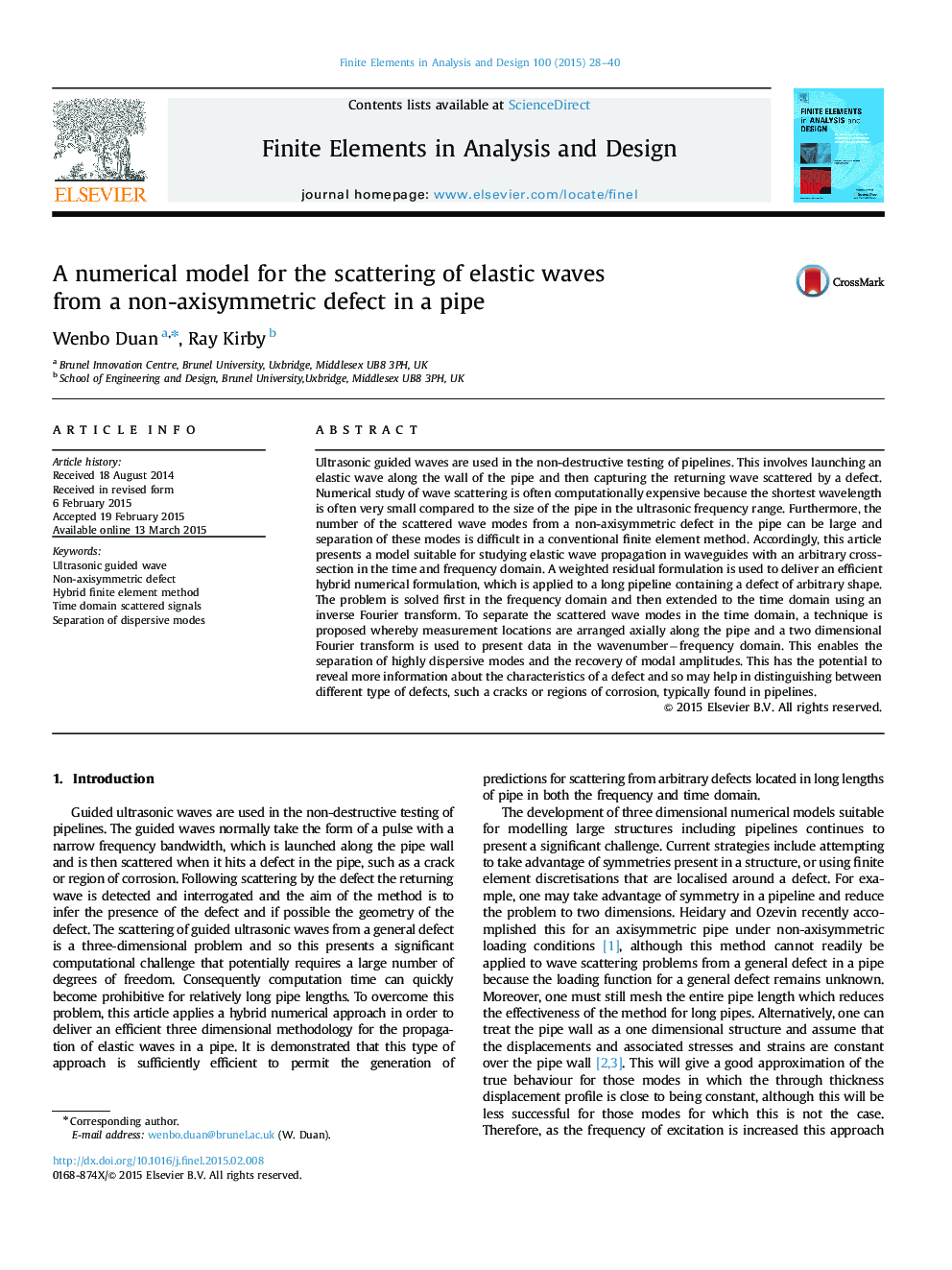| Article ID | Journal | Published Year | Pages | File Type |
|---|---|---|---|---|
| 513755 | Finite Elements in Analysis and Design | 2015 | 13 Pages |
•A hybrid numerical formulation is proposed to study wave scattering from defects.•Finite element method and modal expansion solutions are combined.•Predictions are presented both in the frequency and time domain.•A two dimensional Fourier transform is used to determine modal amplitudes.•Problems associated with dispersion can be avoided in the converted k−ωk−ω domain.
Ultrasonic guided waves are used in the non-destructive testing of pipelines. This involves launching an elastic wave along the wall of the pipe and then capturing the returning wave scattered by a defect. Numerical study of wave scattering is often computationally expensive because the shortest wavelength is often very small compared to the size of the pipe in the ultrasonic frequency range. Furthermore, the number of the scattered wave modes from a non-axisymmetric defect in the pipe can be large and separation of these modes is difficult in a conventional finite element method. Accordingly, this article presents a model suitable for studying elastic wave propagation in waveguides with an arbitrary cross-section in the time and frequency domain. A weighted residual formulation is used to deliver an efficient hybrid numerical formulation, which is applied to a long pipeline containing a defect of arbitrary shape. The problem is solved first in the frequency domain and then extended to the time domain using an inverse Fourier transform. To separate the scattered wave modes in the time domain, a technique is proposed whereby measurement locations are arranged axially along the pipe and a two dimensional Fourier transform is used to present data in the wavenumber−frequency domain. This enables the separation of highly dispersive modes and the recovery of modal amplitudes. This has the potential to reveal more information about the characteristics of a defect and so may help in distinguishing between different type of defects, such a cracks or regions of corrosion, typically found in pipelines.
